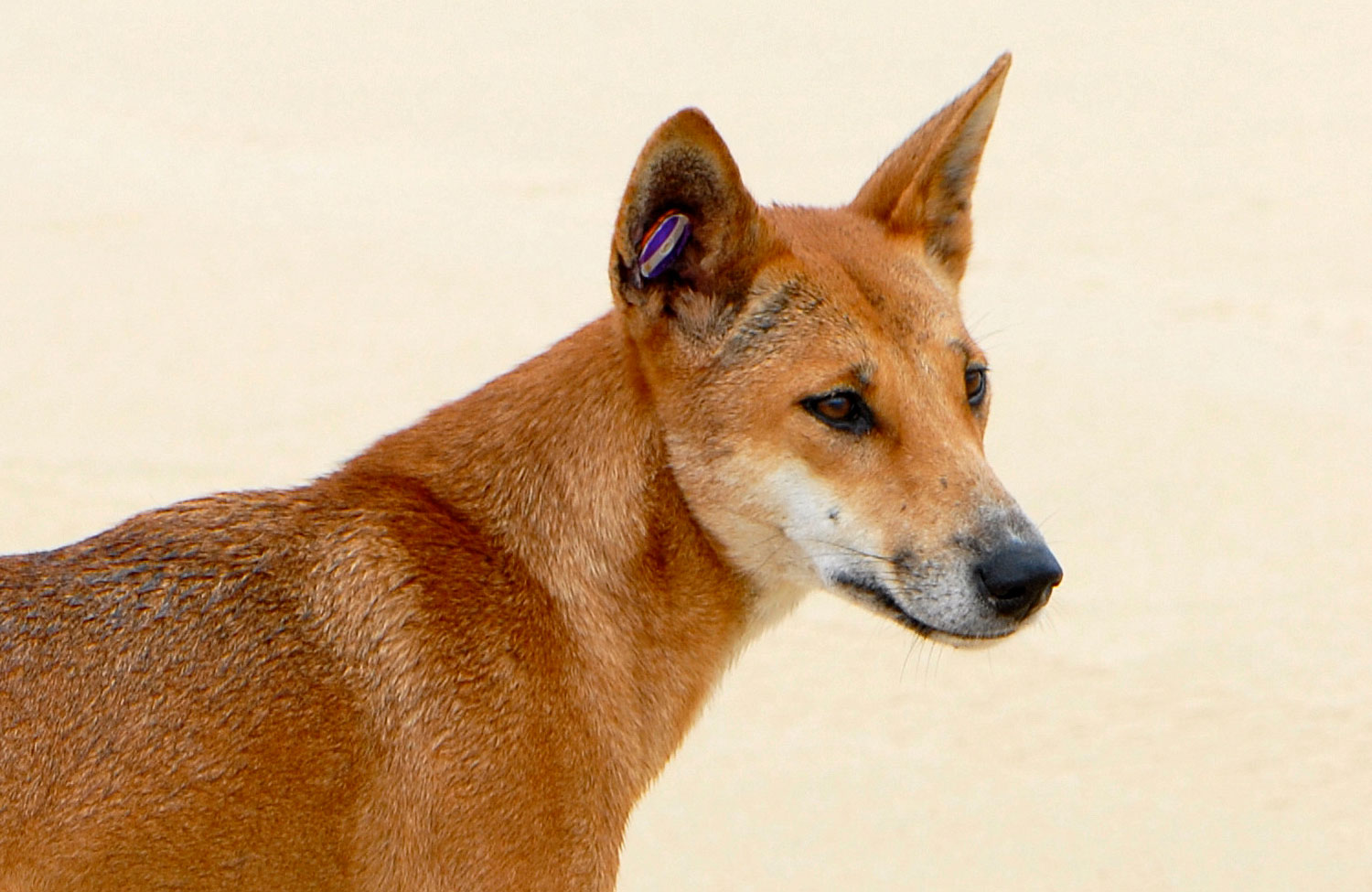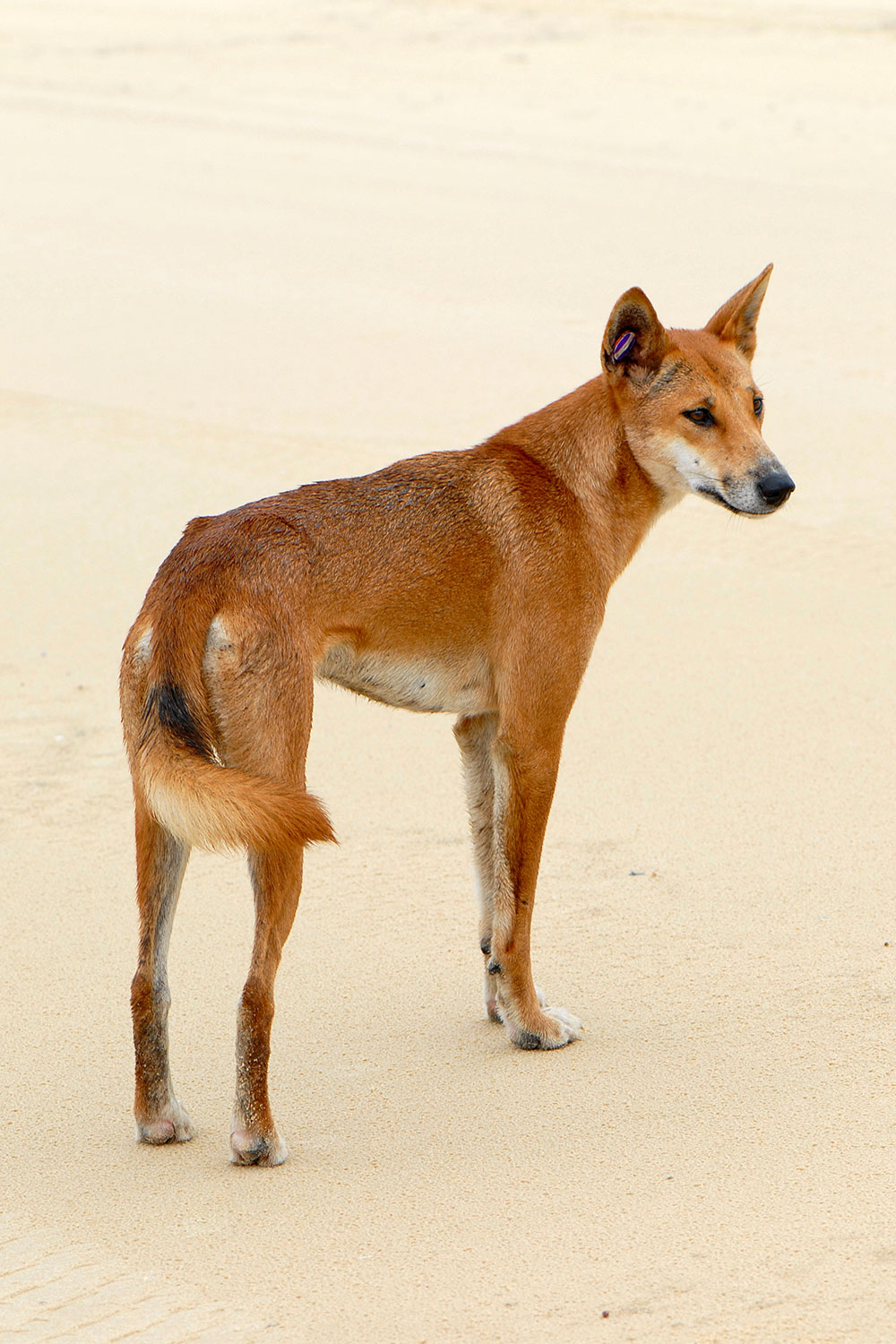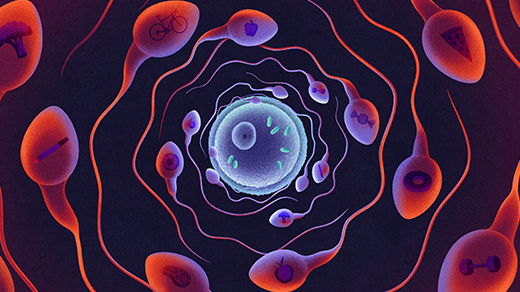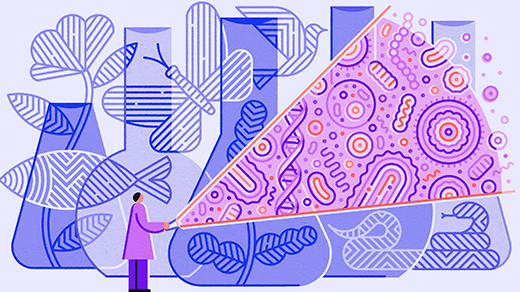A Domesticated Dingo? No, but Some Are Getting Less Wild
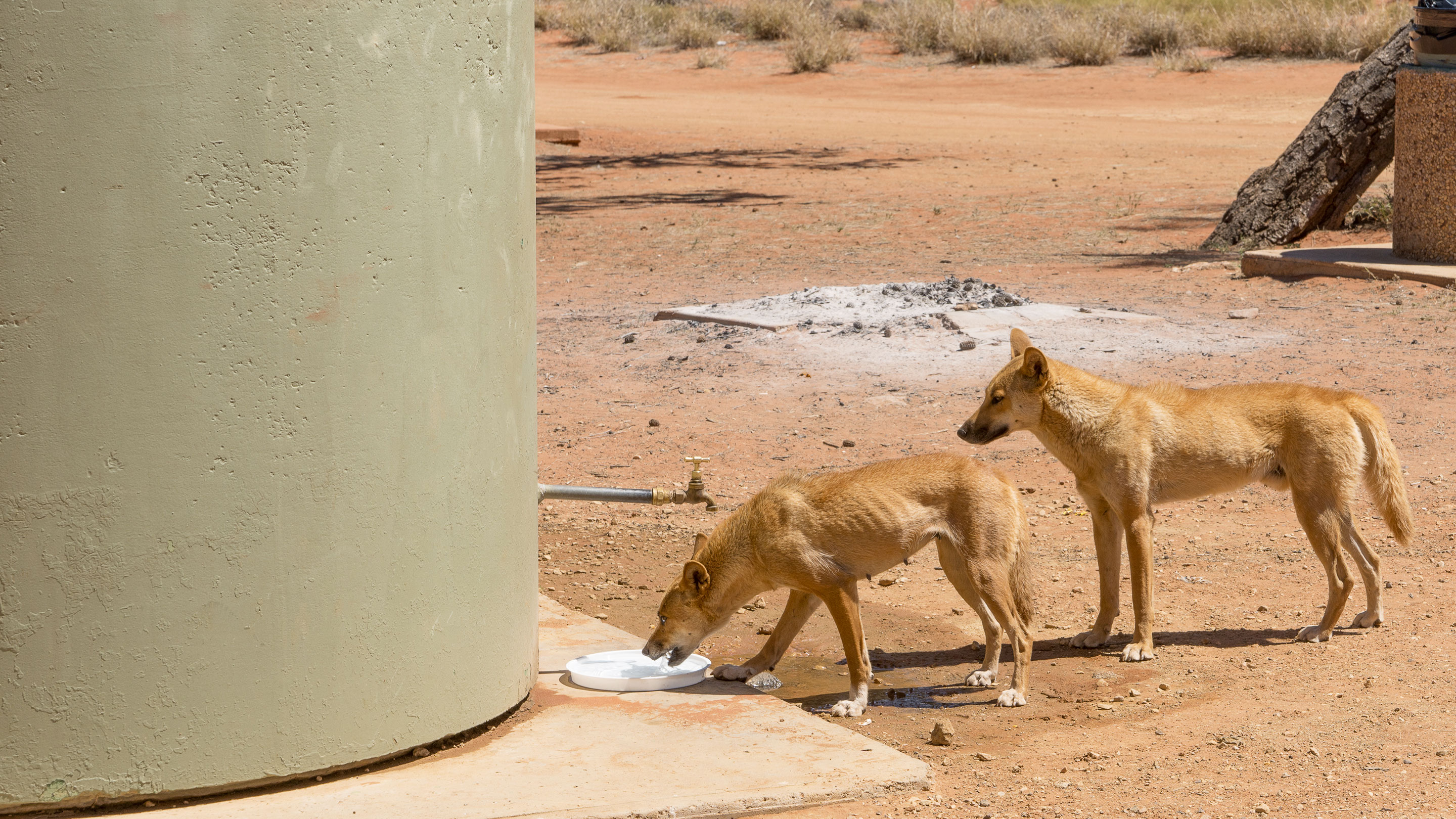
Dingoes that that are venturing close to human settlements and isolating themselves from their wilder kin may offer clues about how dogs evolved during domestication.
Introduction
When workers first dug into the rusty dirt beneath the scrublands of Australia’s Tanami Desert to mine for gold in 2002, mining executives saw dollar signs. Locals saw jobs. Dingoes, however, just saw food. Unsecured rubbish heaps around the mines attracted the lean, golden wild dog with pointy ears that swivel on its skull like perfectly evolved satellite dishes. Like their fully domesticated cousins, dingoes can (and frequently do) eat anything — including food left behind by humans.
Instead of using discarded food to supplement their normal intake of rabbits, rodents, birds and lizards, these dingoes began eating almost exclusively from the garbage dumps. But the dingoes in the Tanami didn’t just scavenge scraps. Over several years, some grew bolder, approaching the mine sites during the day, when people were still up and about. To pass the time, miners began tracking which dingoes were mating with each other, even creating a poster in the town’s bar with photos and names of the local dingoes.
“Typically, a dingo that sees a human flees,” said Thomas Newsome, a dingo expert at the University of Sydney in Australia. “They don’t want to associate with you at all.” In contrast, these animals “were displaying behaviors that are more similar to domestic dogs than what you’d attribute to wild animals out in the desert.”
After more than a decade of studying the Tanami dingoes, Newsome has identified behavioral, morphological and physiological changes that separate the human-habituated dingoes from the free-roaming ones living farther from human habitation. These changes, such as paying closer attention to humans, mimic those thought to have occurred in the earliest stages of dog domestication more than 30,000 years ago. Of course, other wild animals, from raccoons to coyotes, have undergone a parallel set of changes since beginning to live in close quarters with humans. But Newsome began to wonder whether something different might be occurring deep within the Tanami Desert. Humans, he thought, might be redomesticating dingoes.
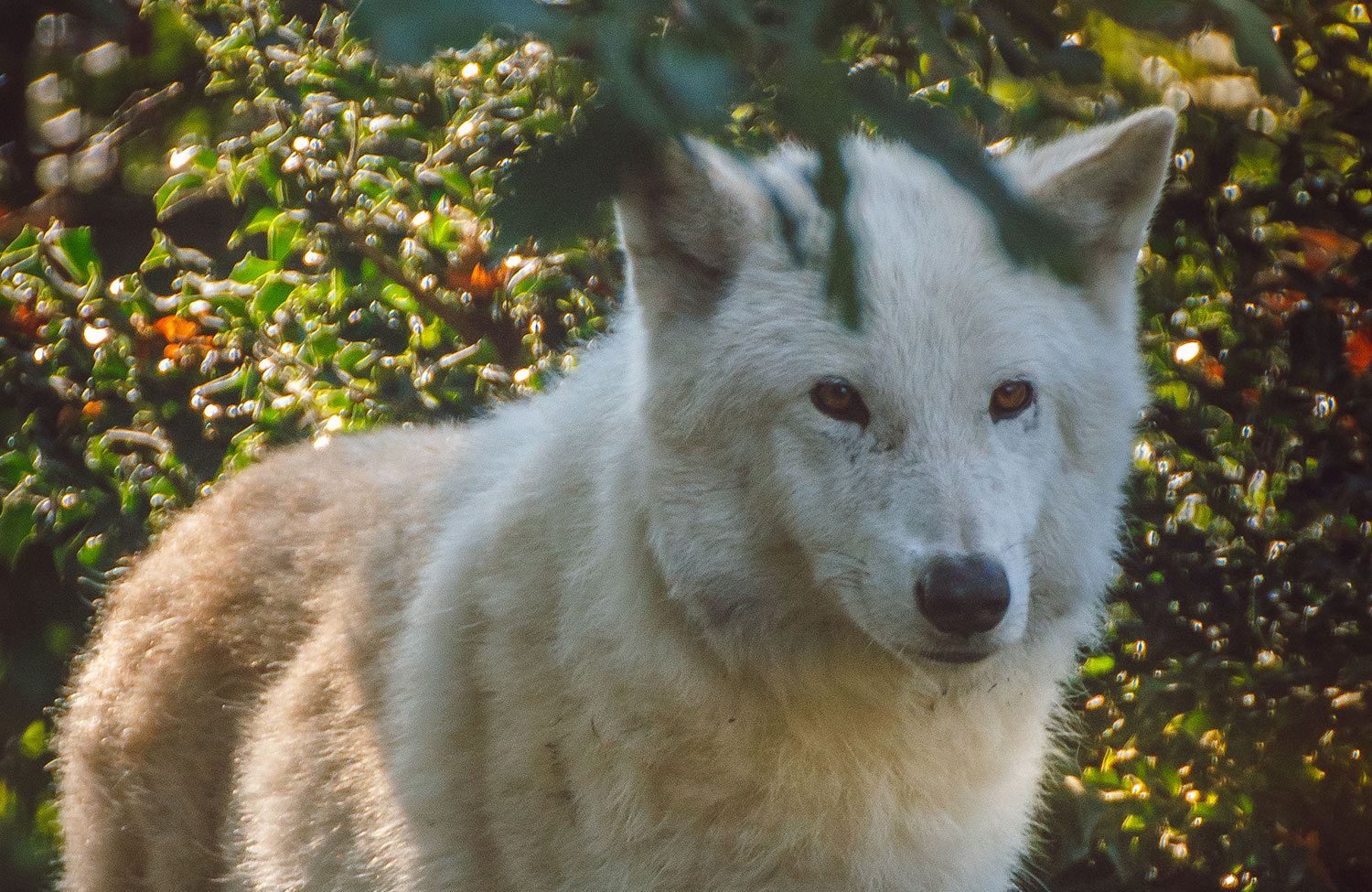
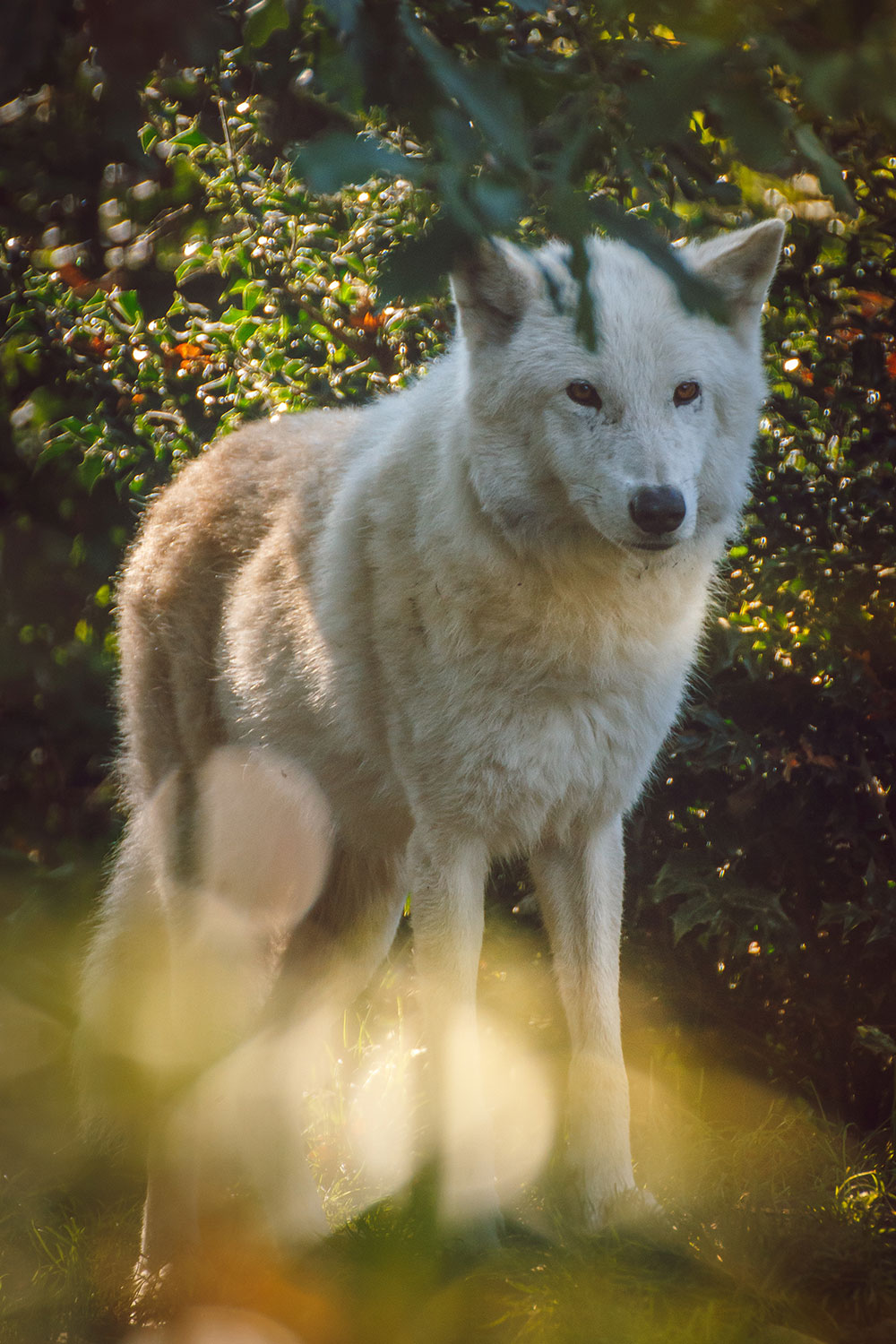
Wolves, the ancient ancestors of today’s dogs, embody the fierce wildness of an apex predator.
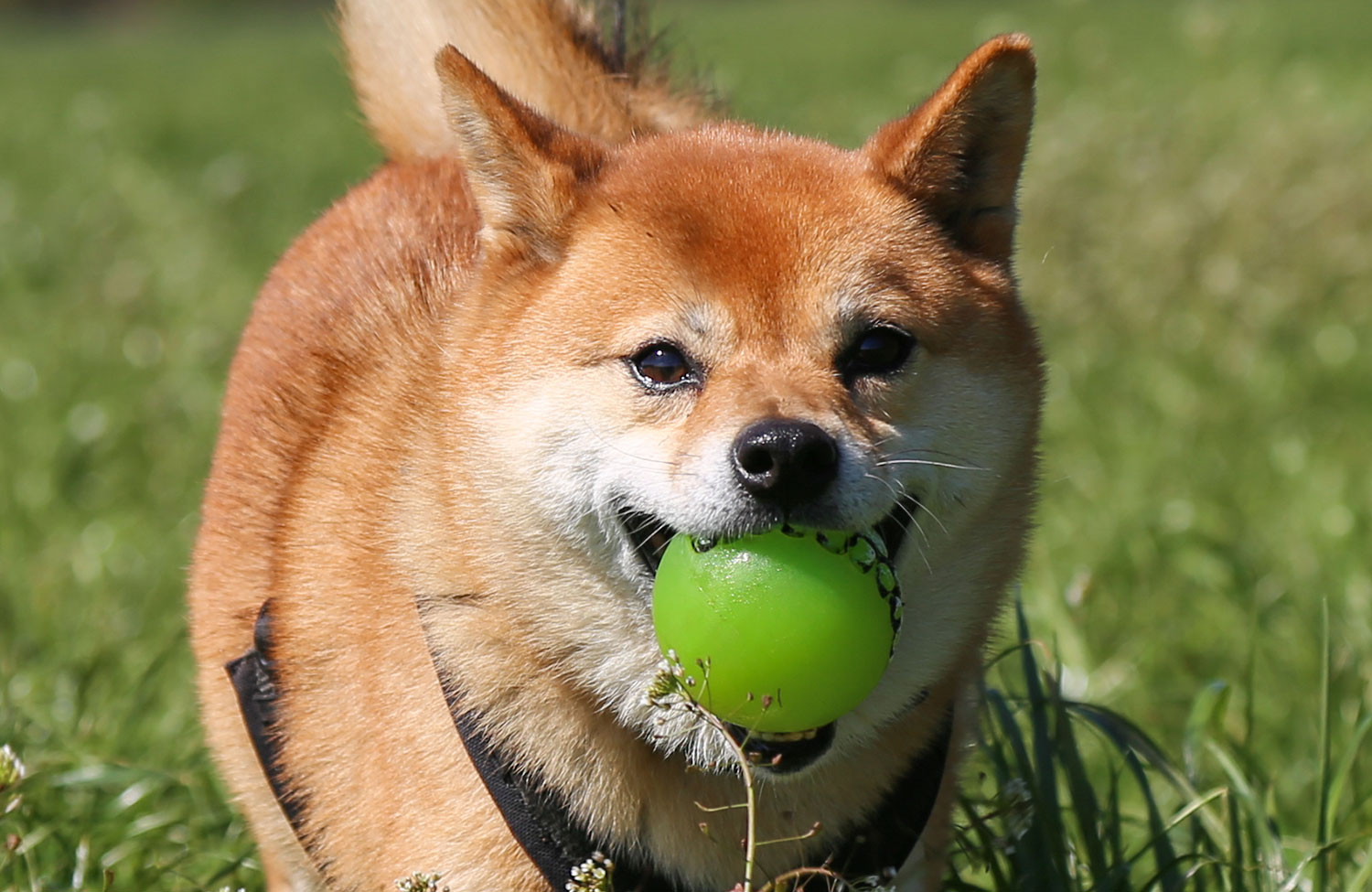
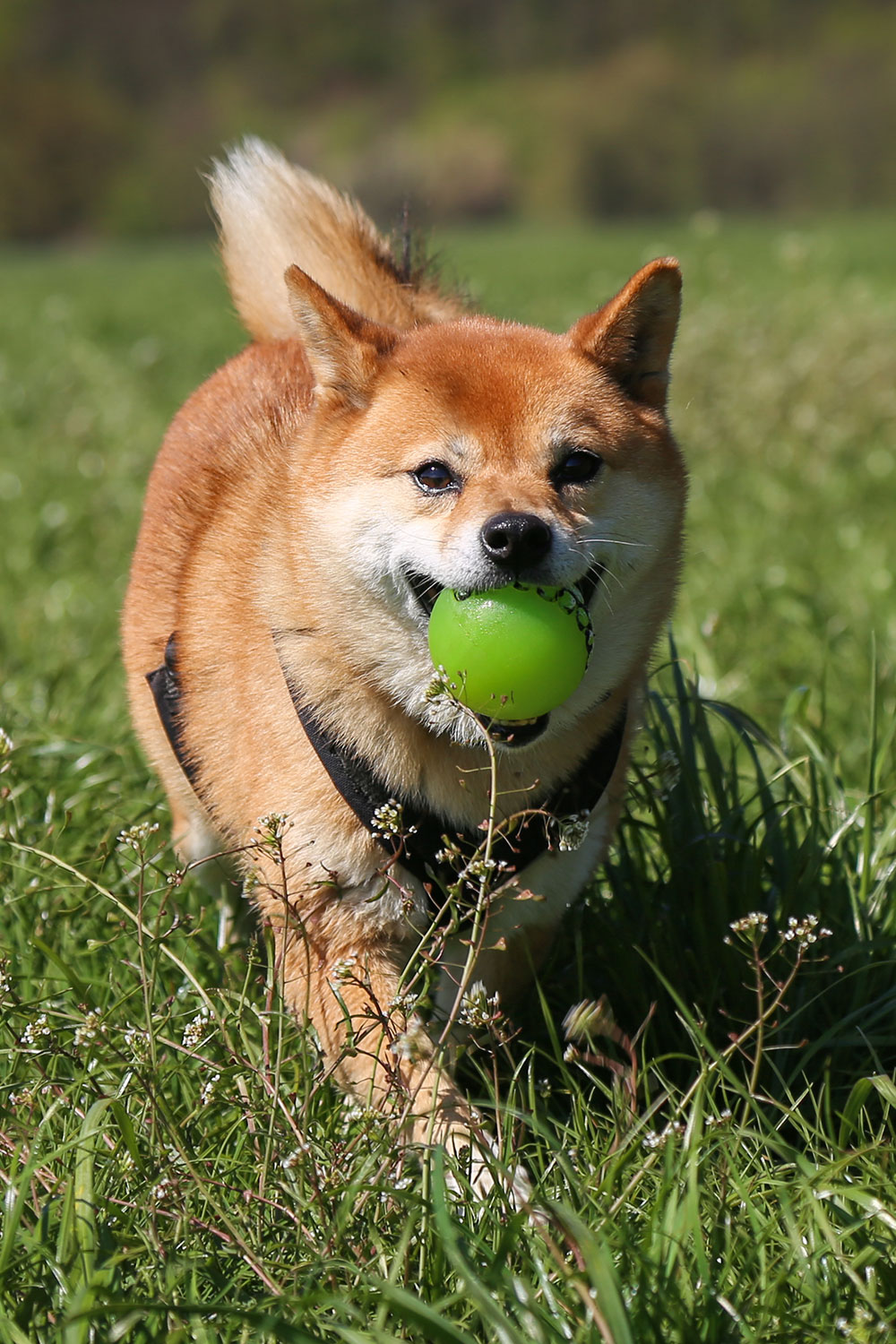
Shiba Inus, one of the oldest dog breeds, bear similarities to dingoes but are fully domesticated.
Wolves, the ancient ancestors of today’s dogs, embody the fierce wildness of an apex predator. Dingoes evolved to be less aggressive toward humans but never let us control them. Shiba Inus, one of the oldest dog breeds, bear similarities to dingoes but are fully domesticated.
It’s a weighty hypothesis, and even Newsome admits all the evidence isn’t in yet. Whether humans can and will fully domesticate dingoes remains to be seen. But regardless of that outcome, the details of human-dingo interactions at remote mining camps may help reveal more about how wolves long ago started down the path of becoming dogs.
How Wolves Became Dogs — and Dingoes Didn’t
Scientists agree on little about the process that turned wild wolves into our furry friends. Genetic evidence suggests that dogs were first domesticated somewhere between 15,000 and 40,000 years ago, although archaeological evidence of possible semi-domesticated dogs began appearing more than 30,000 years ago. Nor is it clear where dog domestication first happened, or whether it occurred once or repeatedly.
“Their evolutionary history hasn’t yet been fully untangled,” said Kylie Cairns, a conservation geneticist and ecologist specializing in dingoes at the University of New South Wales in Sydney.
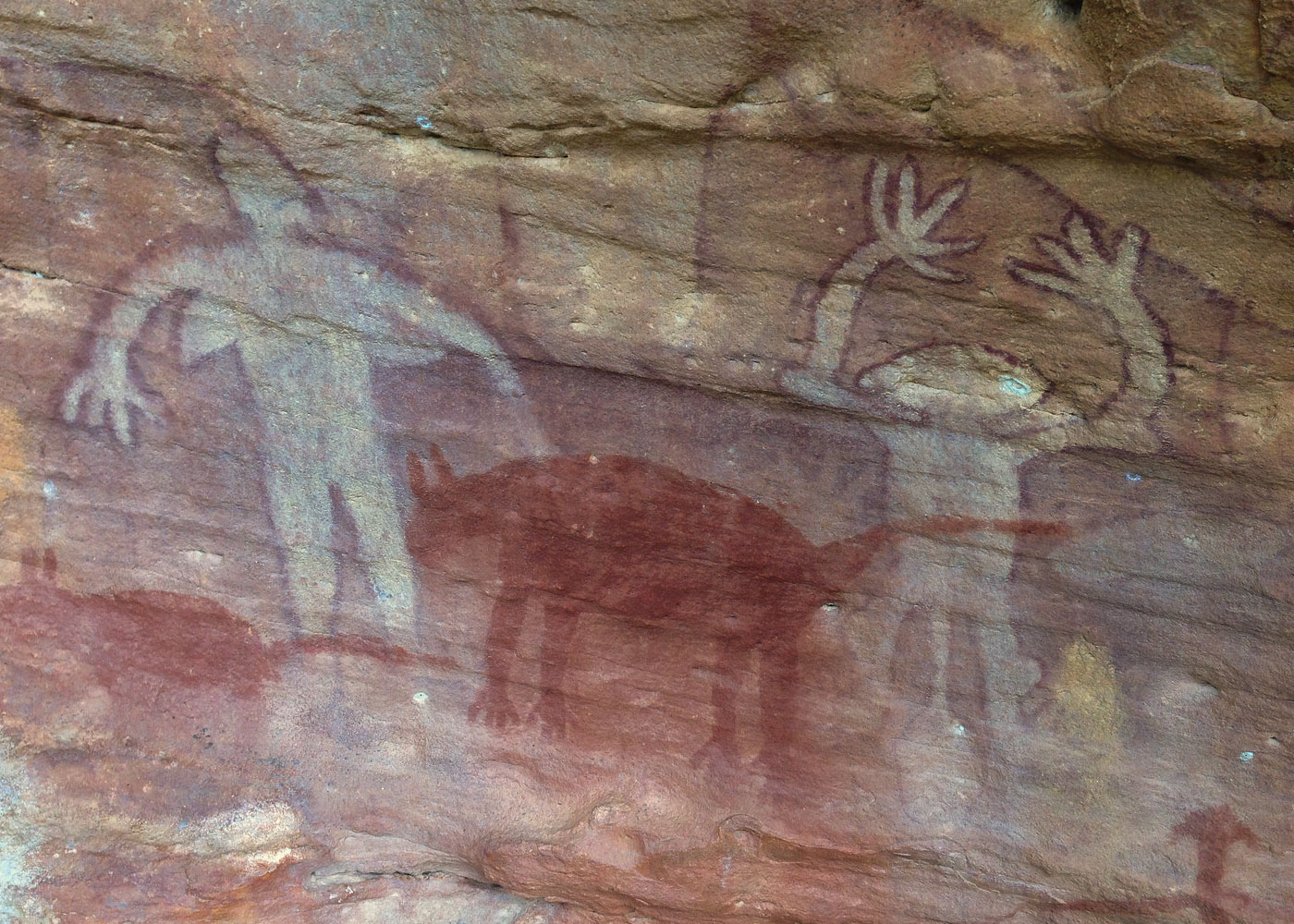
Australia’s aboriginal people have traditionally revered the dingo and celebrated it in their culture, as in this ancient painting.
What scientists do know is this: The high-calorie, easily digestible food waste left in and around prehistoric human camps attracted nearby gray wolves. Many of the animals avoided the habitats of their two-legged competitors, but a few had the courage to begin scavenging from the pile of leftovers. As time passed, humans began to realize that the relationship had benefits. Wolves could help warn about predators and assist with hunting. But the traits that enabled a wolf’s survival in the wild — characteristics like aggression and wariness — weren’t always conducive to life with humans. Gradually, like clay molded by an invisible hand, wolf behavior gave way to something more doglike. Domestication, Cairns emphasized, was a two-way street. Humans didn’t set out to domesticate wolves, but both parties found the new arrangement beneficial.
As humans continued their spread around the world, they brought their proto-pooches with them. One theory holds that the ancestors of dingoes arrived in Australia approximately 4,000 years ago, when a group of seafaring people from the Indonesian island of Sulawesi arrived in Australia with their canines; other evidence suggests the animals arrived with settlers by other means and twice as long ago. But however and whenever they arrived, those canines — no longer wolves but not quite dogs — returned to their wild roots after reaching Australia.
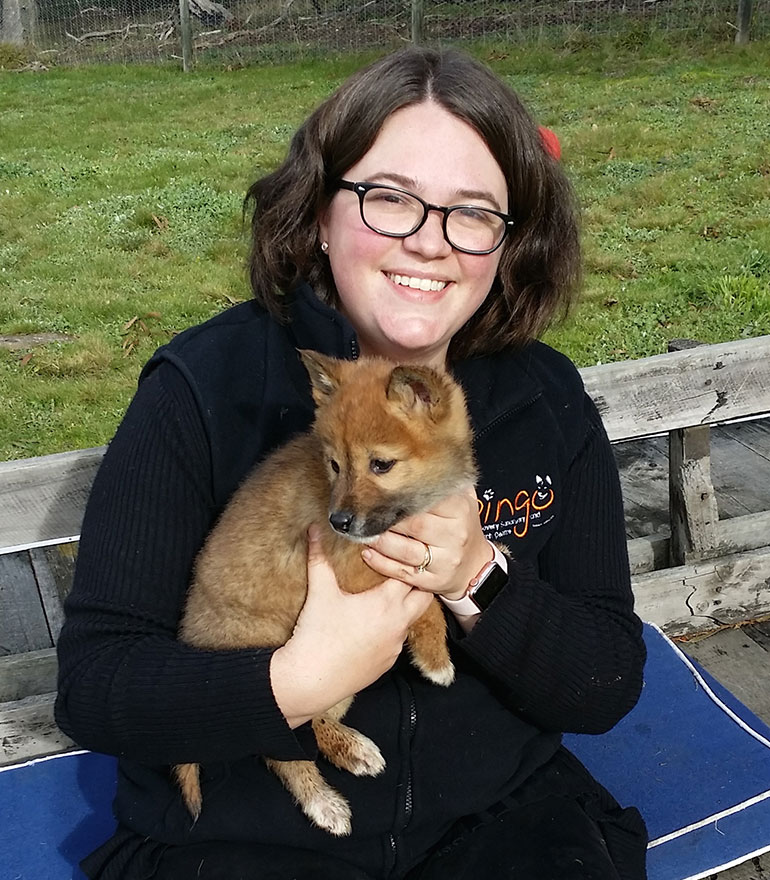
“Dingoes can truly survive without humans,” said Kylie Cairns, a conservation geneticist and dingo specialist at the University of New South Wales in Sydney. She is skeptical of arguments that the animals are becoming any more domesticated.
Ann Cairns
“These dogs weren’t domesticated in the sense that we think about,” Cairns said. “They weren’t like a pet Labrador, and humans weren’t breeding them or controlling which ones bred. Dingoes are probably what dogs would have looked like before humans started messing with them.”
James McIntyre, director of the Southwest Pacific Research Project, is one of the very few scientists ever to have studied the New Guinea highland wild dog, a descendant of those canids that first arrived in Papua New Guinea and a close relative of the Australian dingo.
“No matter how you try to raise them, they’re very predatory. Even if you get them as puppies, their instincts kick in as they become adults,” he said.
Both dingoes and highland dogs returned to a wild state after their initial sojourn with humans. In Australia, dingoes emerged as the continent’s mammalian apex predator. Though dingoes are admired and revered by many Aboriginal peoples, European settlers took a much grimmer view of them, instituting eradication campaigns and erecting a dingo-proof fence across thousands of kilometers of the harsh outback in the early 1900s.
“Australia is now culturally very intolerant of dingoes,” said Mike Letnic, an ecologist focusing on conservation and wildlife management at UNSW. “There’s a deep sense of antipathy in most cases.”
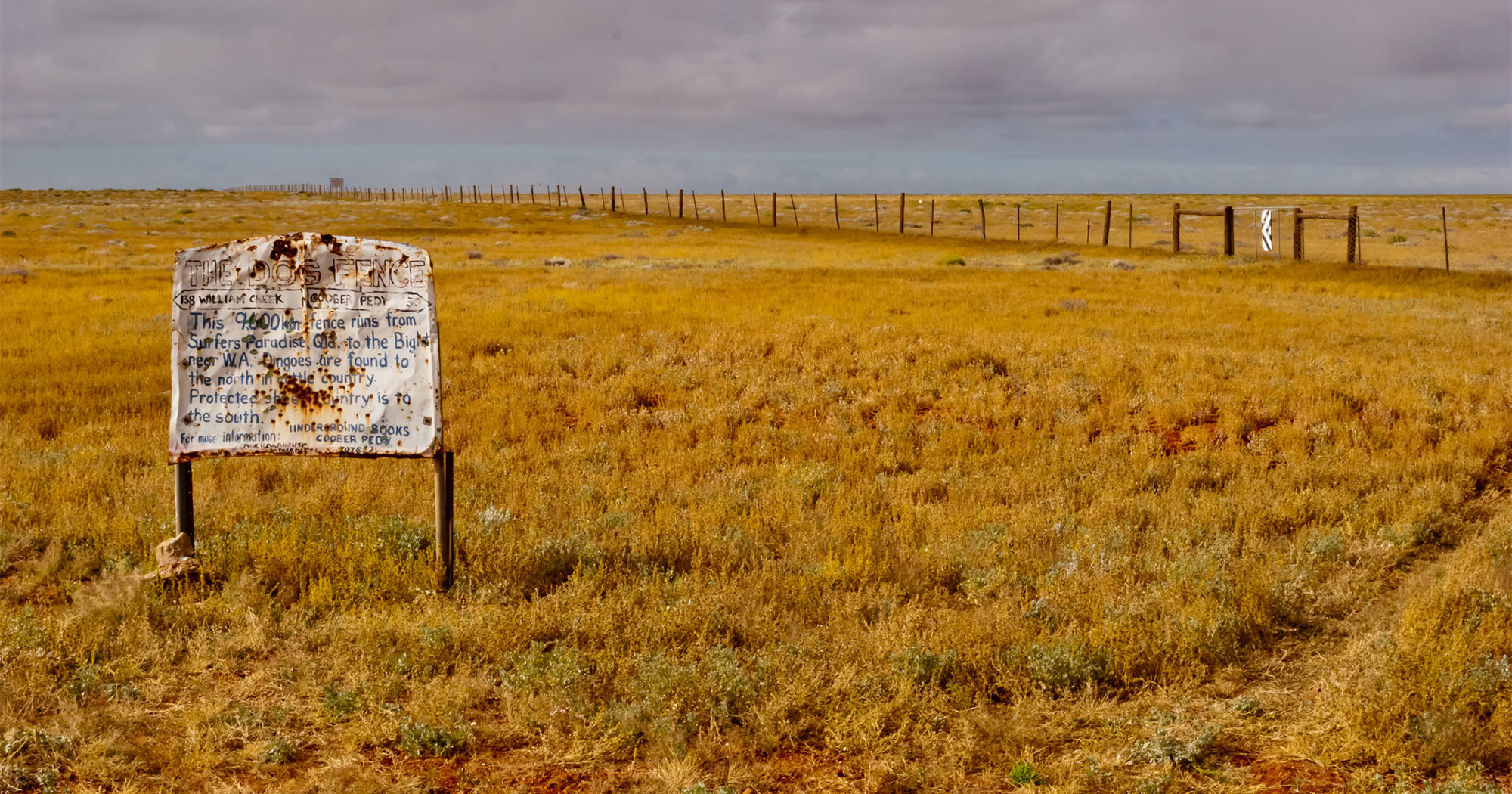
Australians installed thousands of kilometers of dingo-proof fence across the outback in the early 1900s in efforts to control and eliminate the animals.
Learning to Live With People
As a young boy, Newsome traveled around Australia with his ecologist father, who also studied dingoes. After graduating from the University of Sydney with a bachelor’s degree in ecology, Newsome moved to Alice Springs in central Australia to work as an environmental consultant. There, he began hearing stories about dingoes clustering around mine sites in the Tanami Desert. Greater human encroachment into previously pristine wilderness had increased contact and conflict between people and wildlife, and Newsome wanted to understand how this played out. Dingoes, he said, made a natural starting point.
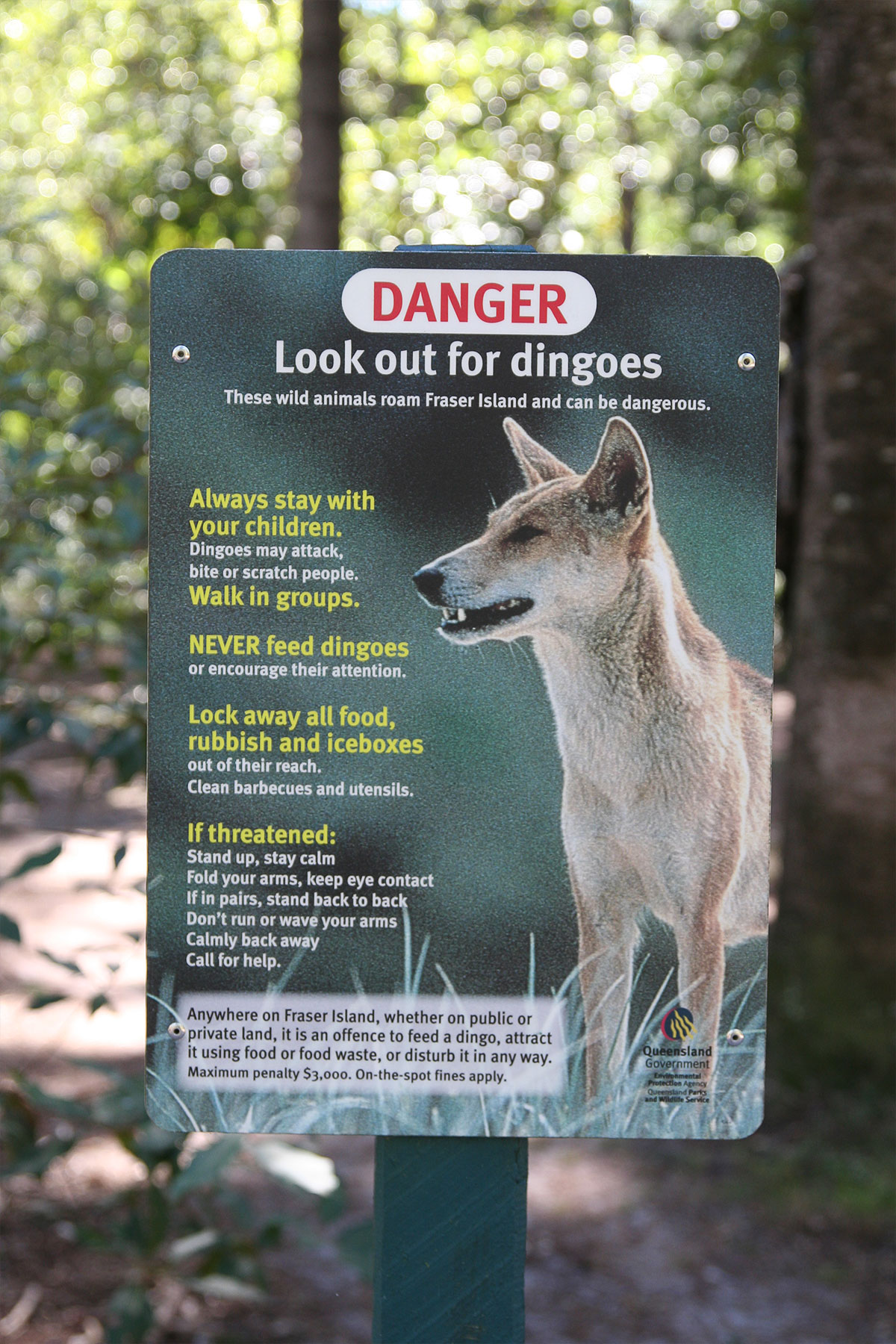
Although dingoes look similar to some domesticated dogs, their wild, predatory behavior differentiates them strongly from pets.
One of the most isolated deserts on Earth, the Tanami sits in the sparsely populated southwestern corner of the Northern Territory and is home to the most genetically pure population of wild dingoes. Newsome’s work documented a group of around 100 of the animals that lived alongside the mining settlement, eating from the dump site, which had enough scraps to feed up to 225 dingoes each day. One hundred kilometers away, in the much more sparsely populated outback, Newsome studied completely wild dingoes that had minimal contact with humans.
The first difference he noticed was in size. The human-habituated dingoes were 20 percent larger than their wild counterparts, thanks to the nutrient-dense leftovers they found around the mine.
Other variations began to stand out, too. A 2014 study in the Journal of Mammalogy analyzed the diets of dingoes and free-roaming domestic dogs using scat samples. Newsome and his colleagues showed that, nutritionally, the dingoes at the mine site ate as well as domestic dogs, and markedly differently from the wild dingoes. A follow-up study revealed that the all-you-can-eat buffet at the Tanami Desert mine site altered the dingoes’ social behavior, too: Their home ranges were smaller while their group size was larger, which Newsome attributes to the ready availability of nutrient-dense food.
The dingoes had also overcome their fear of humans, weaving around Newsome’s legs as he set traps, trying to get him to play. “I was putting plastic bags down on the ground as I walked along the transect [trap line]. And there was a dingo that was running in, picking up those bags and playing with them — dumping them down and kneeling down and crouching,” Newsome said.
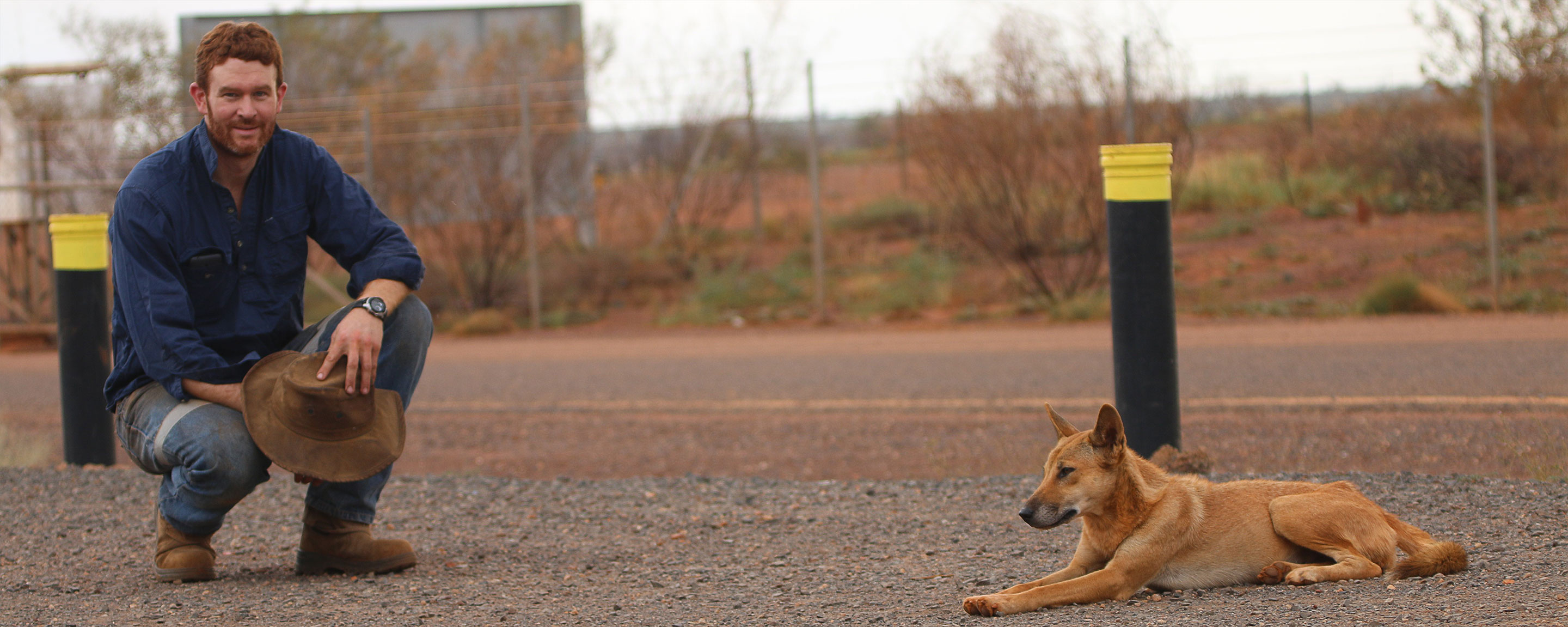
Thomas Newsome is an ecologist at the University of Sydney. His genetic and behavioral observations suggest that some dingoes near a mining settlement in the Tanami Desert are changing in ways suggestive of very early-stage redomestication.
Courtesy of Thomas Newsome
Newsome found that the metamorphosis triggered by the arrival of the Tanami mines reflected even in the dingoes’ DNA. When he compared the genomes of the mine and outback dingoes, he found that the two groups, separated by distances easily traversed by most dingoes, had ceased interbreeding. As the dingoes spent more and more time around humans, they grew increasingly isolated from their wilder counterparts.
“I have hypothesized that where dingoes come in contact with these food resources, their ecology or behavior can be altered to the extent that they are en route to domestication,” he said.
Newsome laid out his hypothesis in an April 2017 paper in BioScience, proposing that dingoes had taken the first steps toward a second domestication event, one paralleling that of the dogs long ago. The changes that Newsome had identified — the behavioral shifts and the genetic isolation — also probably occurred when wolves began their slow transition to Fido. Should these changes play out for another couple hundred years, perhaps humanity may alter dingo biology enough to have created a Domestic Dingo.
These changes won’t exactly recap the transition from wolf to dog because dingoes experienced partial domestication in their distant past. But Newsome said that the low level of domestication in prehistory, combined with the dingoes’ rewilding, still made this study meaningful, especially since genetic differences between dingoes and dogs are clearly identifiable.
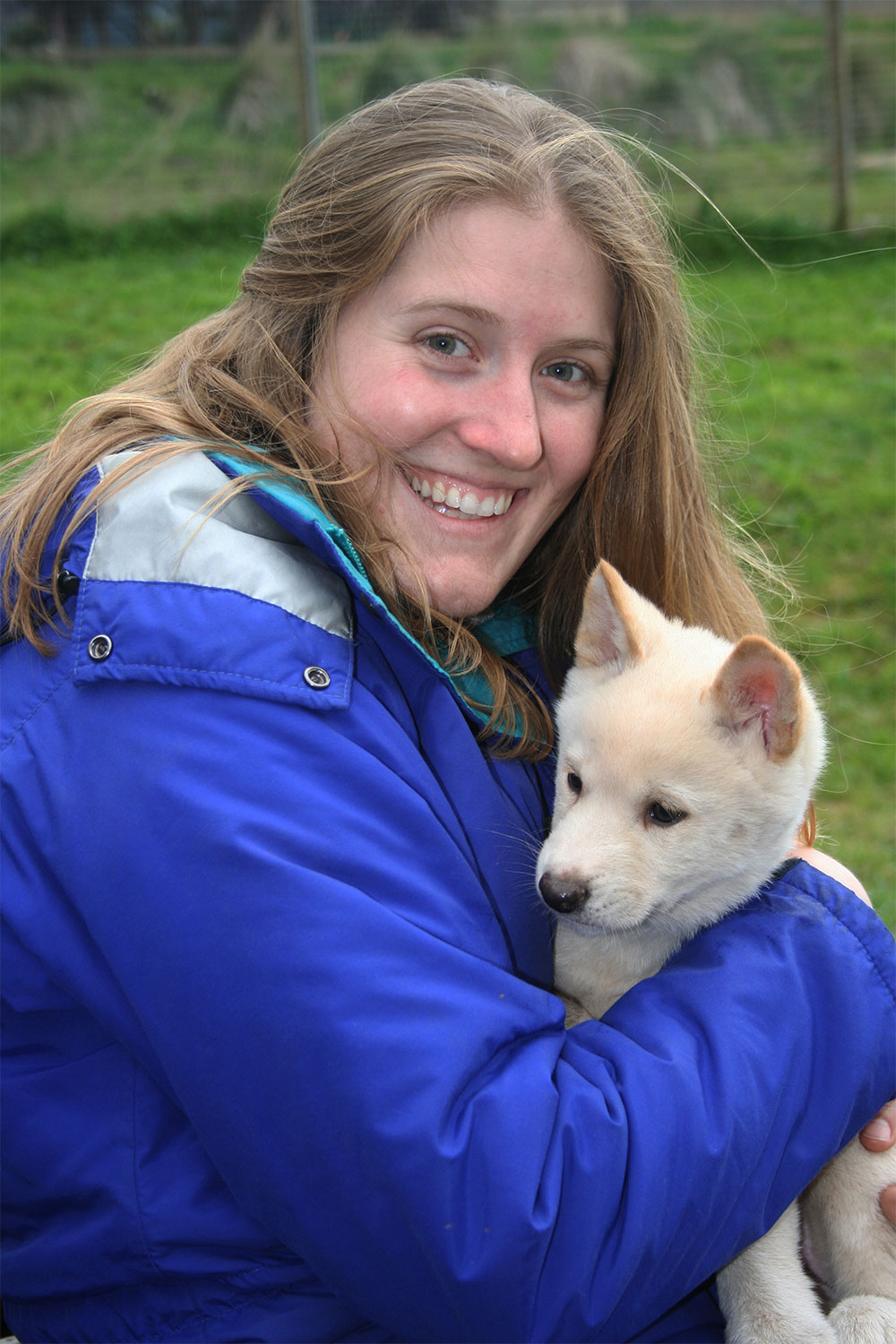
According to Angie Johnston, a canine behavior researcher at Yale University, “Dingoes give us a snapshot of the earliest part of domestication.”
Bradley Smith
Given dingoes’ ancient history with partial domestication, it makes sense that they may adapt to humans speedily, said Angie Johnston, a psychologist who studies canine behavior at Yale University. When Johnston measured how readily wolves, dingoes and pet dogs sought eye contact with humans, she found dingoes to be smack between wolves and dogs.
“Dingoes give us a snapshot of the earliest part of domestication. This behavior could start to support further domestication,” Johnston explained. “The difference was not huge, but it could be really important for shaping behavior.”
The Call of the Wild
But these changes alone don’t create a domestic animal, Cairns pointed out. Other factors, such as increased reproductive rates and a dependence on humans for survival, need to shift before an animal can become genuinely domesticated. The dingoes haven’t yet fulfilled those criteria, even if Newsome believes they have taken the first halting steps in that direction.
“Dingoes can truly survive without humans,” Cairns said.
Domestication of dogs or any animal takes hundreds or thousands of generations, said Anindita Bhadra, an ecologist at the Indian Institute of Science Education and Research Kolkata who studies the behavior of India’s street dogs. India’s oldest surviving written book, the Vedas, contains 3,500-year-old references to roaming packs of street dogs, long predating the burgeoning megalopolises of New Delhi, Mumbai and Kolkata. Hand-raise the pups of these street dogs, though, and you can find yourself with a friendly mutt and house pet.
“They’re very easy to make friends with — the puppies blindly trust humans,” Bhadra said.
Not so with dingoes. Bradley Smith, a dingo expert at Central Queensland University, said that although some Australians have successfully kept dingoes as pets, the animals can be unpredictable and are far more aggressive than the average dog.
Yet ferocious traits aren’t immutable. Starting in the 1950s, the Russian geneticist Dmitry Belyaev and his colleagues in Siberia took wild silver foxes and selectively bred the tamest ones. Within 40 generations, they had created cute, cuddly foxes with floppy ears that could be kept as pets. What’s occurring at the Tanami mines is neither deliberate nor controlled, but Newsome said that Belyaev’s work provides evidence that, under the right circumstances, domestication can occur far more quickly than anyone realized.
Letnic said that although it’s technically possible for dingoes to become a second species of domestic dog, it’s not probable. “We already have one dog, and I’m not sure people are going to see the need for another one,” he said.
Regardless of what happens to dingoes, Newsome said, the opportunity to study their interactions with humans at the Tanami mines provides a unique chance to tease apart some of the very first steps in the transition from wolf to dog. Whether these dumpster divers make the transition from dingo to dog or continue to remain on the periphery of human settlements, however, is as much up to them as it is to us.
This article was reprinted on TheAtlantic.com.
